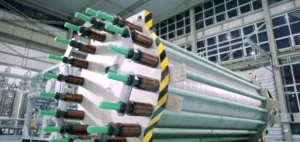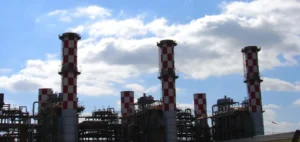On October 6, the Oxford Institute for Energy Studies published a report entitled “Regulating the future European hydrogen supply industry: A balancing act between liberalization, sustainability, and security of supply?”, which examines the role hydrogen could play in Europe’s future. This report looks at the challenges and issues involved in regulating a nascent market.
Advances in hydrogen technology
To help you understand the implications of regulating the hydrogen sector, here’s an overview of technological advances in the field. Hydrogen – and green hydrogen in particular, produced from renewable energies – is seen by world authorities as a means of decarbonizing many industries. Hydrogen is promoted as a solution for reducing greenhouse gas emissions. It would guarantee the availability of energy by reducing our dependence on fossil fuels. It’s important to bear in mind, however, that this is not a miracle solution that will reduce the emissions associated with energy production overnight. Although the production of hydrogen, for example in refineries, is a process that has long been mastered and used, the storage and transport of hydrogen are still in the testing phase, in order to reduce the amount of energy required. To be stored, hydrogen can be compressed at very high pressures (around 700 bar) or liquefied by being cooled to -253°C. Both methods require a great deal of energy, both to achieve storage conditions and to maintain them over long periods. What’s more, in gaseous form, hydrogen takes up much more space than natural gas or gasoline for the same amount of deliverable energy, making it ill-suited to the transport sector – aviation, trucks and freighters – which are often mentioned as possible outlets for hydrogen. If Europe is to develop this market over the next few years, there are major technological and economic constraints that need to be resolved quickly.
The environmental benefits of hydrogen are the main driving force behind its market development. This sector is still young and underdeveloped, which is why it requires extensive logistical organization and solid regulations.
Regulating the hydrogen market in Europe
As it has done with the electricity and natural gas sectors, Europe wants to regulate the hydrogen market. The latter has not yet been established, so future supply and demand in the sector are highly uncertain. This evolution and the scale of the market will be largely influenced by technological developments, regulatory policies and economic dynamics.
Developing a European regulatory framework for hydrogen is a complex task, which must take into account the unique nature of the sector. The structure must encourage market development while ensuring fair access to this resource. The structure must therefore be flexible to adapt to different evolutions, whether geopolitical, technological or market-wide.
The evolution of energy legislation in Europe
In order to understand Europe’s priorities in building this framework, the report describes the development of energy-related legislation in Europe. Initially, energy was a national priority, with each government’s objective being to guarantee security of supply on its territory. In the 1990s, Europe pushed for the liberalization of the sector and the adoption of real European governance in energy matters. The aim was to create an internal market where competitiveness could flourish. Sustainability and security of supply played a minor role in European concerns. In the 2000s, Europe began to include the ecological dimension of energy in its regulations. Recent geopolitical events have led us to increasingly question the importance of security of supply.
Finally, Europe today needs to think about hydrogen market regulation in terms of three fundamental principles: liberalism, sustainability and security of supply.
These three pillars are essential and often complementary, but they can also be in conflict. Indeed, optimizing energy efficiency leads to a reduction in fossil fuel imports, which in turn improves the security and sustainability of energy supplies. However, national subsidies for renewable energies can weaken internal markets and their accessibility. Europe is committed to achieving carbon neutrality by 2050, which is why the hydrogen market needs to develop rapidly, thus satisfying the sustainability criterion. This speed upsets the traditional mechanisms of risk-averse liberalism, slowing the growth of the hydrogen industry. The aim is to ensure rapid, stable market development to avoid the risk of collapse.
Similarities with electricity and natural gas networks
There are similarities between today’s electricity and natural gas networks, and the deployment of hydrogen. That’s why the regulatory framework for hydrogen must draw on lessons learned from the history of the electricity and natural gas sectors. Rules developed by bodies such as the European Network of Transmission System Operators for Gas (ENTSOG) and the European Network of Transmission System Operators for Electricity (ENTSO-E) can be used.
The article notes that regulations need to cope with these uncertainties, and therefore need to be innovative compared to current regulations for conventional energies. They also need to be adaptable and forward-looking, in order to counter any problems that may arise. For example, the current conventional energy sector is struggling to adapt to decentralized renewable energy sources, demonstrating the need to rethink the structure to ensure the growth of the hydrogen market.
Finally, regulations concerning hydrogen will have to be combined with those already in place in the energy sector. Hydrogen will be linked to the electricity sector for its production and to the natural gas sector for its transport, which requires good coordination and compatibility of structures.
Network planning and development scenarios
The study gives several hypotheses as to the directions to be taken to start structuring the legal framework, as well as the difficulties faced by legislators.
Several network topologies have been studied (industrial clusters, decentralized networks, central and peripheral systems, multimodal transport…), each model has its own economic and logistical reasons and must be considered in relation to supply, demand and technical conditions. The optimized structure depends on factors such as location, network size, import dependency… The main conclusion of the report is that a flexible, adaptable network is needed, capable of evolving in response to unstable market conditions.
As there is as yet no established market, regulations need to encourage innovation and the desire to invest in infrastructure, for example through public subsidies to stimulate market development.
Several modes of transport can be used to transport hydrogen (pipelines, trucks, shipping, hydrides, etc.), but the study is moving towards the reuse of natural gas pipelines for hydrogen transport, due to the similarities between the two energy carriers. Pipelines are considered by the study to be the most economical option for large-scale distribution over long distances. However, in the Climate Exchange podcast, IFP professor Ludovic Leroy points out that the piping used to transport natural gas is not suitable for hydrogen, as the material would not be able to withstand it. Hydrogen affects the composition of metals (which makes it possible to transport them in the form of hydrides), potentially weakening them and making it impossible to convert the current natural gas network. If this mode of transport across Europe is indeed chosen, then pipeline operators will have a monopoly on transporting hydrogen, and measures will have to be taken to guarantee fair access for the various protagonists (producers, consumers and transporters). However, the report does mention that new players could enter the discussion and bring their innovations and new perspectives, which could help improve the sector’s competitiveness.
Hydrogen demand sectors
The main sectors driving demand for hydrogen are the petrochemical and steel industries. Demand is projected to grow for heavy transport and power generation. The assumption is that demand, initially focused on specific regions, will diversify and lead to a demand for decentralized infrastructures. The study also calls for hydrogen to be considered as a means of storing renewable electricity on a seasonal basis, although some industry specialists would caution against this, given the energy required to store it and the difficulties of storing hydrogen sustainably and limiting its losses.
Hydrogen is currently produced by two methods. Firstly, electrolysis using renewable energies, but also natural gas treatment processes. Hydrogen can therefore be produced from renewable energies, which are scattered across Europe (solar energy is available around the Mediterranean and wind power in the northern regions), so that current hydrogen production is decentralized, with small production centers spread across Europe.
To adapt to the decentralized nature of generation and likely changes in demand, grid planning needs to be transparent and inclusive. Europe can draw on tools already developed, such as the Ten-Year Network Development Plan (TYNDP) and Projects of Common European Interest (PCI). Several forecasting simulation techniques have been used to determine market trends. Various probable scenarios for Europe’s future energy system have been developed,
covering electricity, natural gas and hydrogen. These simulations can help identify infrastructure needs and guide the allocation of European funds.
Another approach would be to have a phased development that would adapt to market evolution.
Traditional cost-covering mechanisms cannot be applied. Different strategies will need to be proposed, such as merging hydrogen and natural gas tariffs, using government subsidies or direct hydrogen tariff subsidies to stimulate investment and market growth. Once again, given the still immature state of the market and the uncertainties surrounding its evolution, players will have to adapt and manage revenues in a different way, while ensuring fair market access and competitiveness.
Clear rules for network access conditions can facilitate the participation of a variety of players, and thus promote competitiveness.
The question of horizontal and vertical separation
Given the similarities between the natural gas and hydrogen sectors, the report suggests a horizontal separation that would enable the same operators to manage both natural gas and hydrogen networks, in order to accelerate the maturation of the hydrogen market thanks to a good knowledge of the environment. Measures will need to be taken in the event of such an operation to ensure fair competitiveness and avoid the creation of monopolies.
The report also pushes for vertical separation, in which the grid operator is separated from other energy-related operations to limit corporate control over the entire production chain, as has been done in the electricity and natural gas sectors. Finally, the report stresses the importance of separating energy production, transmission and distribution. Indeed, by separating these entities, market failures and natural monopolies could be better anticipated, have less impact on the hydrogen value chain and even bring transparency and innovation.
Key elements for regulating the hydrogen market
Finally, several key elements were mentioned and their importance emphasized in the report for regulating the hydrogen market. Ensuring equitable access for all stakeholders is essential, and can also be beneficial for implementation, as encouraging their participation can increase the sector’s resilience and sustainability. Because of the synergies between the various sectors, it is essential to have European coordination systems. The legal framework must be innovative and enable us to anticipate future developments, so as to be as effective and useful as possible in shaping the hydrogen market. Europe needs to strike a balance between market liberalism, sector sustainability and security of energy supply.






















